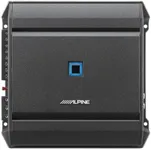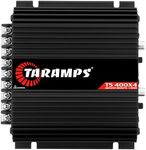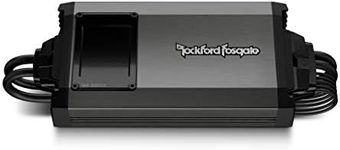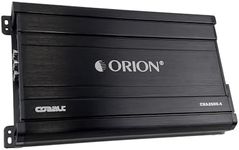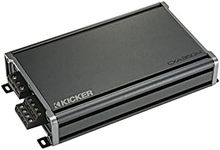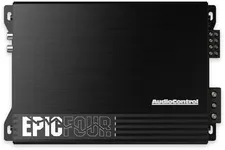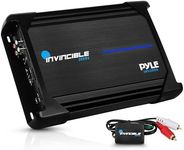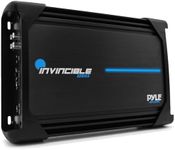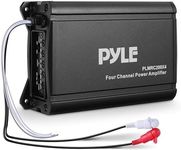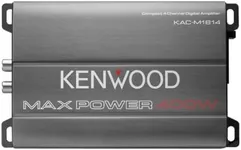Buying Guide for the Best 4 Channel Amplifier
Choosing the right 4-channel amplifier for your audio system can significantly enhance your listening experience. A 4-channel amplifier is designed to power four speakers, making it ideal for car audio systems or home theater setups. To make an informed decision, you need to understand the key specifications and how they align with your needs. Here are the essential specs to consider when selecting a 4-channel amplifier.Power Output (RMS)Power output, measured in watts RMS (Root Mean Square), indicates the continuous power the amplifier can deliver to each channel. This spec is crucial because it determines how loud and clear your speakers will sound. Generally, amplifiers with higher RMS power provide better sound quality and volume. For casual listening, an amplifier with 50-75 watts RMS per channel is sufficient. For a more powerful and dynamic sound, look for amplifiers with 100 watts RMS or more per channel. Match the amplifier's RMS power to your speakers' RMS rating for optimal performance.
Total Harmonic Distortion (THD)Total Harmonic Distortion (THD) measures the amount of distortion the amplifier introduces to the audio signal, expressed as a percentage. Lower THD values indicate cleaner and more accurate sound reproduction. A THD of less than 1% is generally acceptable for most listeners, but audiophiles may prefer amplifiers with THD below 0.1% for the best sound quality. If you prioritize sound clarity and fidelity, choose an amplifier with a low THD rating.
Signal-to-Noise Ratio (SNR)The Signal-to-Noise Ratio (SNR) measures the level of the audio signal compared to the background noise, expressed in decibels (dB). A higher SNR means less background noise and clearer sound. An SNR of 90 dB or higher is considered good for most applications. If you want the best possible audio experience, look for amplifiers with an SNR of 100 dB or more. Consider your listening environment and how much background noise you can tolerate when choosing an SNR rating.
Frequency ResponseFrequency response indicates the range of frequencies the amplifier can reproduce, typically measured in Hertz (Hz). A wider frequency response range means the amplifier can handle both low bass and high treble sounds more effectively. For most music and audio applications, a frequency response of 20 Hz to 20,000 Hz (20 kHz) is sufficient, as this range covers the full spectrum of human hearing. If you listen to a wide variety of music genres or want to ensure you capture all audio details, choose an amplifier with a broad frequency response.
Impedance CompatibilityImpedance, measured in ohms (Ω), refers to the resistance the amplifier encounters from the speakers. It's important to match the amplifier's impedance rating with your speakers to ensure proper performance and avoid damage. Most 4-channel amplifiers are compatible with 4-ohm speakers, which are common in car audio systems. Some amplifiers can also handle 2-ohm or 8-ohm speakers. Check your speakers' impedance and choose an amplifier that supports it to ensure compatibility and optimal sound quality.
Crossover FeaturesCrossover features allow you to control the frequency range sent to each speaker, ensuring that each speaker receives the appropriate frequencies for its design. Built-in crossovers can include high-pass filters (HPF) for tweeters and midrange speakers, and low-pass filters (LPF) for subwoofers. These features are important for achieving a balanced and clear sound. If you have a diverse speaker setup, look for an amplifier with adjustable crossover settings to fine-tune your audio system.
Size and InstallationThe physical size of the amplifier and its installation requirements are practical considerations, especially for car audio systems where space may be limited. Measure the available space in your vehicle or home setup to ensure the amplifier will fit. Some amplifiers are designed to be compact and easier to install in tight spaces. Consider the installation process and whether you need professional help or if you can do it yourself. Choose an amplifier that fits your space and installation capabilities.
